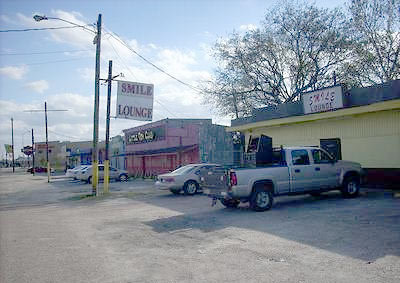
Telephone Road south of I-45 has changed forever, declares John Nova Lomax:
Gone is the Mexican Catholic blue-collar neighborhood to the north around Queen of Peace church, its place taken by a string of hot sheet motels, clip joints, massage parlors and other such venues of vice. This is what’s left of the Telephone Road Mark May, Steve Earle, Rodney Crowell, Culturcide and others have written songs about.
But it’s all impossibly sadder. The Telephone Road that Earle and Crowell sang about in the rollicking songs of that name is long gone. Crowell’s version is set in the ’50s and early ’60s, and Earle’s in the early ’70s. Today’s Telephone Road far better fits Earle’s “The Other Side of Town.â€
There’s more street-level reporting in Lomax and David Beebe’s latest narrated and well-lubricated walking tour, which starts Downtown and heads east along Leeland, through a neighborhood called Edmondson Addition:
Boarded-up hovels line some streets, awaiting inevitable transformation into the (mostly shoddy) condos that are springing up like dandelions here. Other streets reminded us of some of Galveston’s less opulent older districts – one and two-story wood frame houses standing on bricks, interspersed with brick warehouses and workshops.
The story includes Lomax’s encounters with Golfcrest’s underground shopping-cart economy and his retelling of a Telephone Rd. crack-and-hookers tale too uh . . . racy to fit into a song lyric.
After the jump, a very different portrait of Telephone Rd. from an earlier era.

